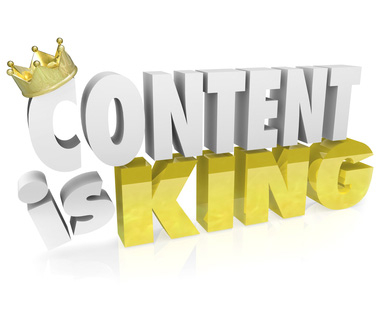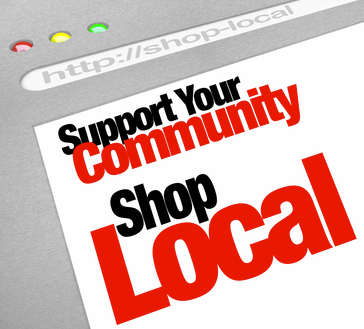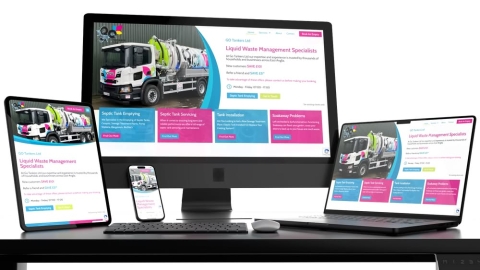FREE Search Engine Optimisation (SEO)
Tips for your website...
You may believe that optimising yourwebsite’s compatibility with online search engines would be a highlyexpensive and technical process... However that does not have to be thecase. So to achieve greater search engine results, to increase theamount of traffic being directed to your website, and ultimately tomaximise the online presence of your business without spending a penny,be sure to follow the simple SEO guide below:
SEO tip #1 – Page Titles
Pagetitles have a very important impact upon SEO, and are something whichcan create a huge difference to the online presence of your website,incredibly simply. A common mistake is to use the same page title forevery page site-wide. This greatly limits the likelihood of your webpages being found by the search engine from the keywords which the userhas searched. So to increase the potential for search engines to findone of your web pages, edit your page titles individually to make themunique and relevant to the content of each web page. With a greatervariety of keywords used within your page titles, your website will havefar greater chances of being highly and widely ranked within searchengine results.
SEO tip #2 – Headers and sub-headers
Headersare required at the top of every web page, and sub-headers are usefulto break up the text on each page - helping users to find specificallywhat they are looking for, promptly. However in addition to these basicfunctions of headers and sub-headers, search engines use them in a moretechnical manner to recognise highly relevant search engine results. Thekey point to understand here is that search engines will only payattention to headers which are as set as “H1” and sub-headers which areset as “H2”. These H1s and H2s will have a standard appearance, font andsize; however they are noted by search engines as key pieces ofinformation. Therefore if a user searches a phrase which is also used asa H1 or H2 within your website, it causes great potential for your webpage to be highly ranked within the search results.
SEO tip #3 – Content
Contentis king. While broader content used within your web pages is likely todraw more traffic to your website from a greater variety of keywordssearched, it will not be beneficial to you or your business if you have ahigh bounce rate. Bounce rate refers to the amount of single-pagevisitors to your website who exit your site from the landing pagebecause your website is not in fact relevant to their search. SEO isonly worthy if your website visitors are going to be happy visitors whodo not feel like you have wasted their time; so be sure that the contenton you web pages is significant and relevant to your purpose. Don’t gooff on a tangent, it will only confuse search engines and your visitorsalike.
SEO tip #4 – Alt tags
When uploading images toyour site, always use Alt tags to describe the picture in brief keywords. Alt tags offer alternative text to images which can prove to behighly useful in certain circumstances; for example to provide furtherdetail of an image in instances where images cannot be displayed (forexample to people who use text-only browsers), to enhance userexperience for those with disabilities who are using a screen reader,and to describe the link in hyperlinked images to give an insight intothe link destination before a user redirects.
SEO tip #5 – Internal Linking
Searchengines will pay more attention to linked text within your website,therefore long tail linking is another key SEO tip. Selecting longerphrases within your web content and linking them to other relevant pageswithin your website will result in those web pages being more highlyranked by search engines. Don’t only link to and from your homepage;always include an internal link when mentioning content on a web pagewhich is relevant to the content on another of your web pages. To ensurethat you are choosing to link effective phrases which are commonlysearched for, the Google keyword tool is highly recommended. By usingthe Google keyword tool you can find out exactly what web users aresearching for at which rates in order to make informed decisions aboutwhich web content to link.
SEO #6 – Back Links
Havingback links on your website is another key SEO tip. A back link is a linkon an external website which links directly back to your website viarelevant content. Your website will then in turn inherit some of theother website’s ranking potential. This can be highly valuable to yourwebsite, particularly so if the other website is one of strongauthority. This will make your website appear higher in search engineresults.
SEO tip #7 – Accurate Copy
For users to rateyour website - and in turn your business - with high credibility, it isimportant that the copy on your website reads fluently with grammaticalaccuracy. If every visitor to your website is distracted by your poorspelling and confusing sentence structures then they will not be able tosee past this which would be extremely detrimental to your business. Ifyour website visitors cannot appreciate the service which you areoffering because you are struggling to explain your services accuratelyand fluently, then all of your SEO efforts will be wasted. If contentwriting is not one of your personal strong points then hiring acopywriter is a must.
SEO tip #8 – Meta Tags
A Meta tagis a line of HTML coding which contains Metadata about a webpage. It isessentially a page description which Google will present as a mini‘advert’ for your website on the search engine results page. Make sureyou create a different Meta tag description for each page of yourwebsite if your CMS allows this. Using Meta tags will increase yourclick through rate and in turn lead to higher conversion. Note: Searchengines no longer read Meta keyword tags so you can leave this blank.
SEO tip #9 – Videos
Googlehas recently expressed a huge love for videos, presenting videosrelevant to the search term towards the top of the search engine resultson page one, sometimes pushing highly relevant websites which arelacking in videos on to the second page. Videos will make your websitemore accessible, and give users variety and flair – after all, who isgoing to read 1,000 words about your business when they can watch andlisten and understand everything your business has to offer in 30seconds of simple video?!
SEO tip #10 – Social Networking Buttons
Inthis age of social media, online networking websites like Facebook andTwitter can act as fantastic tools for marketing your business on theweb. Adding a Facebook ‘like’ button, and a Twitter ‘follow’ button toyour website is a great way to get the word spread about your business.If social media users see that their best friend has ‘liked’ or‘followed’ your business then they themselves are likely to take a lookand follow suit. This snowball effect will boost the online presence ofyour business rapidly - and the more social networking button clicks youget on your website, the more Google will ‘like’ your website in turn!






